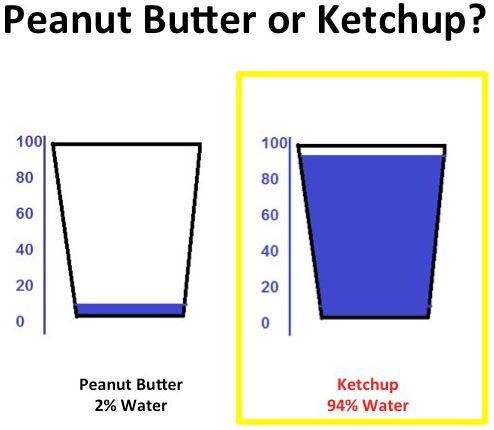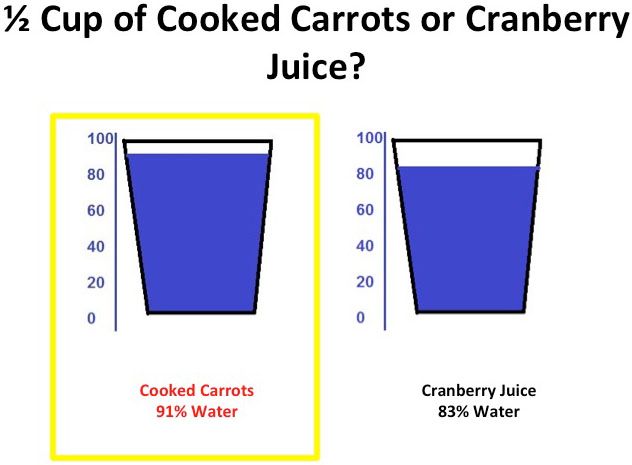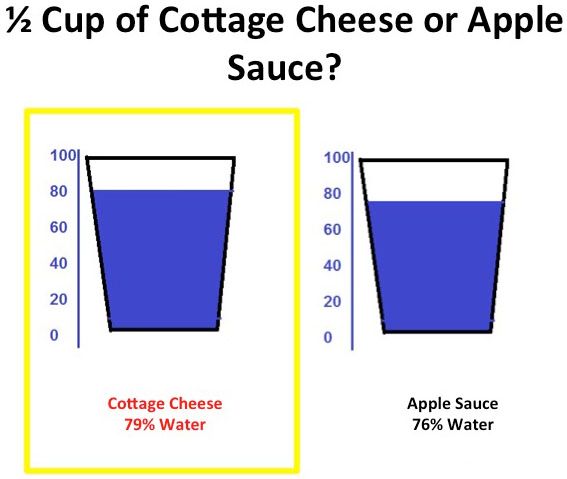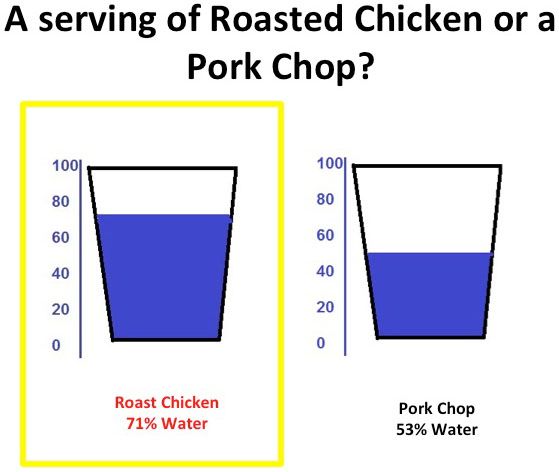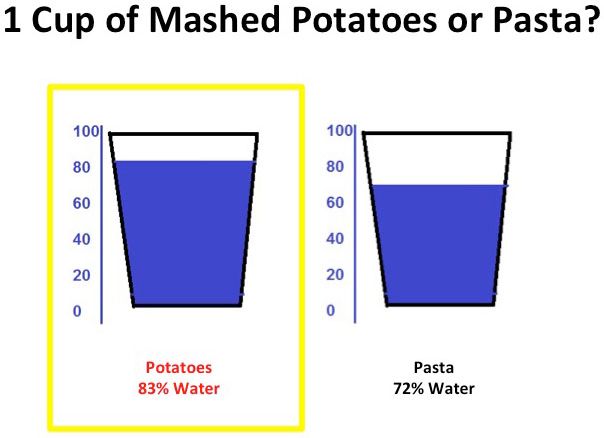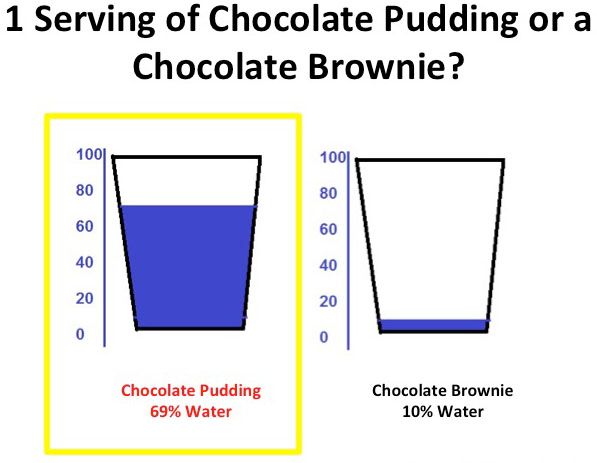Many frail older adults are at risk for dehydration. Providing enough water to the older adult is a challenge, as decreased thirst may limit beverage intake. Water comes in many forms, in beverages, but also in foods. When food intake decreases, so does water intake. Encouraging food and beverage intake are important in preventing dehydration in frail older adults.
Foods vary widely in water content. You may be surprised to find out that many common foods that are not liquids are quite high in water! Continue to Table 2 to learn more.
Where's the water? Answer Key
Tips for readers:
- Frail older adults are encouraged to drink milk and other nutrient-rich beverages between meals.
- Encourage three servings of fruit and fruit juice each day.
